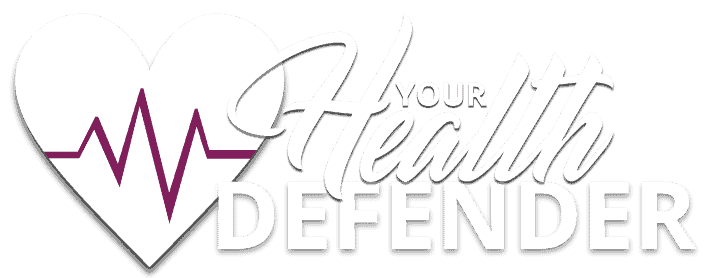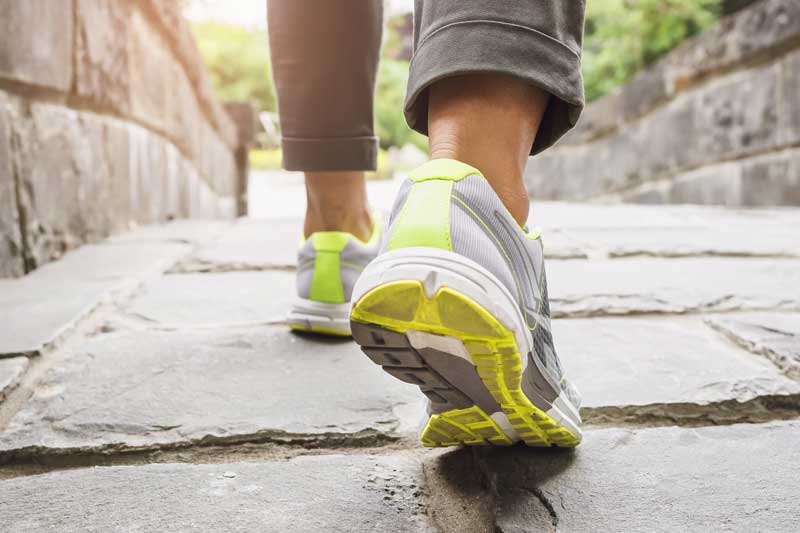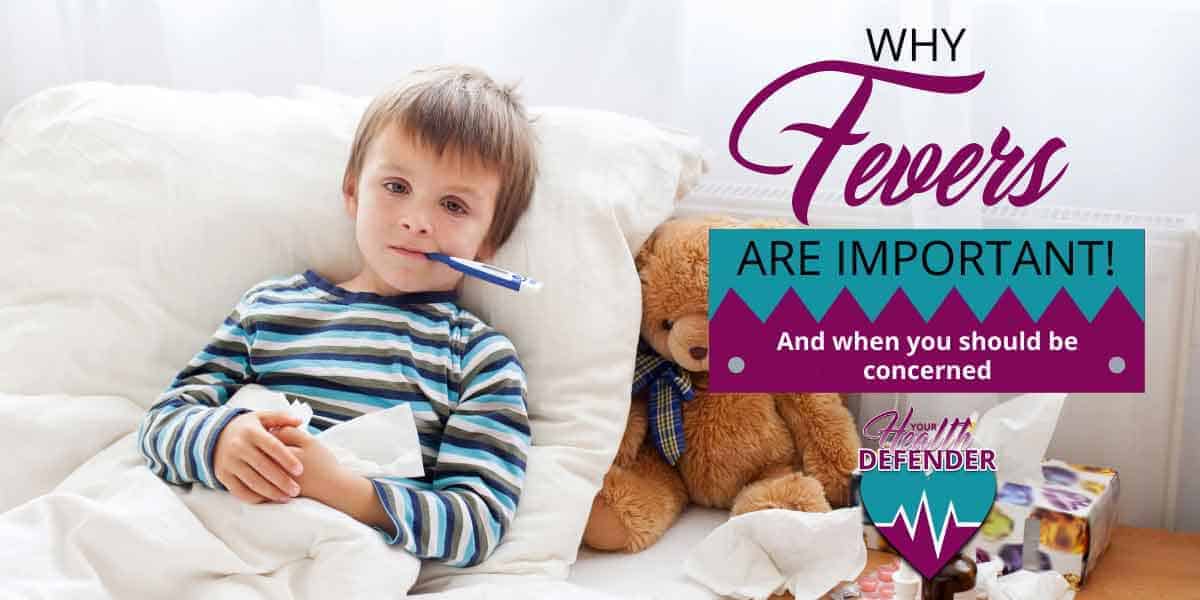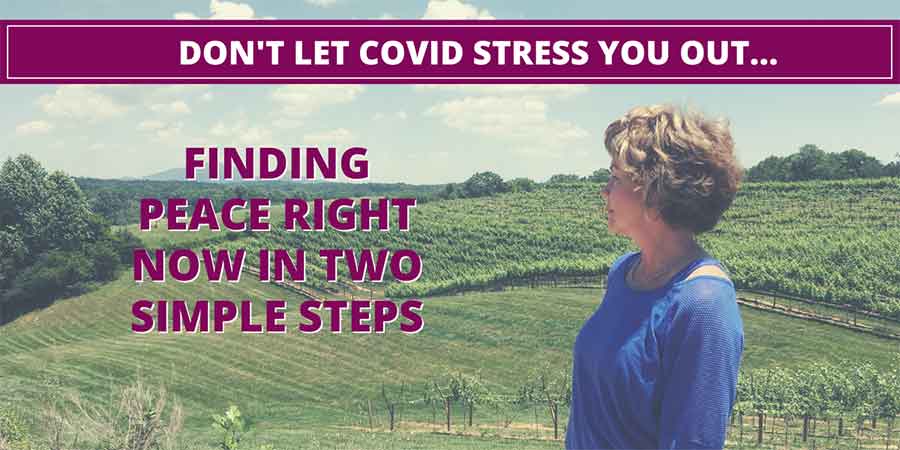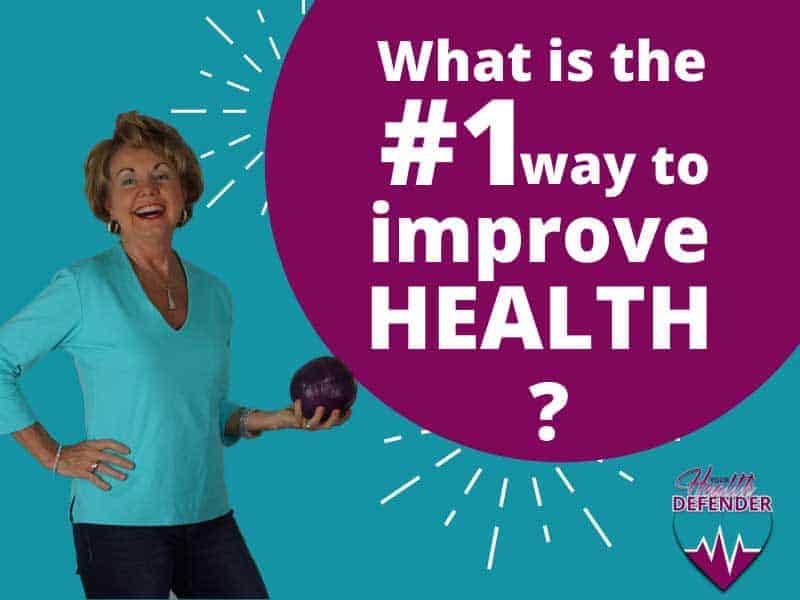How Bone Repair (or Remodeling) Works
First, let’s review how bone repair works. It’s called “remodeling.”
Osteoclasts (a.k.a the demolitionists) clear away bone, breaking down small bits of bone releasing minerals & nutrients
Osteoblasts (a.k.a the builders) build bone; they line the cavity with collagen. They draw calcium & other minerals from the blood, forming crystals on the collagen. The collagen & minerals harden into bone tissue. These osteoblasts absorb minerals & put them back into the bone while building new segments of bone.
This process takes 3 to 6 months. So if you did a DEXA scan and learned that you have osteopenia or osteoporosis, just think, in just 3 to 6 months you can show improvement!
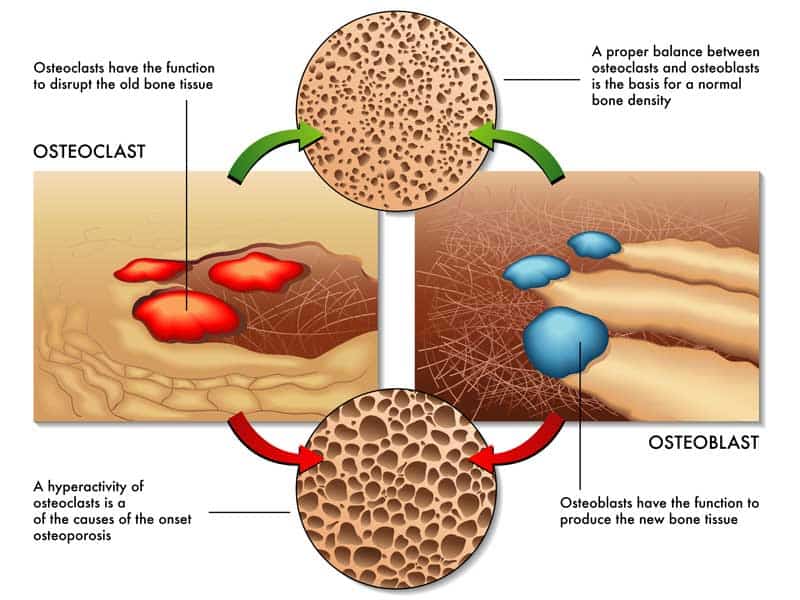
Menopause & Bone Building
FAQ: Does menopause affect your bone-building?
Yes, but remember, 50% of women’s bone loss occurs before menopause.
Here is how menopause affects your bone-building:
- Estrogen stimulates the bone-building activity of the osteoblasts and suppresses the bone dissolving activity of the osteoclasts. After menopause, the osteoblasts are still building bone, but their efforts are outdone by the out-of-control osteoclasts. Not enough estrogen is stopping the osteoclasts from dissolving bone. This indicates that the system is out of balance.
- Estrogen helps your body absorb calcium from food and promotes the conservation of calcium by the kidneys, so less is excreted. It also stimulates the activity of Vitamin D, which is essential for calcium metabolism. Therefore, when estrogen levels go down, so do these functions.
How Do Commonly-Prescribed “Bone-Building” Drugs Work?
Let’s look at these bone building prescriptions. These are called Bisphosphonate drugs. Fosamax is one you may have heard of. According to functional, integrative MD’s, these drugs can actually make matters worse. They do thicken the bone, but in turn, make it mechanically weaker.
Fosamax has been required to include a warning on its label about atypical femur fractures since 2011.1 These drugs have also been linked to osteonecrosis of the jaw – DECAY of the jawbone.2
WHAT? The very drugs prescribed to increase bone density have a propensity to cause femur fractures and jaw bone decay? YES! And you can add to this that these drugs have many other known side effects, including liver damage,3 increased risk of atrial fibrillation,4 esophageal cancer,5 kidney toxicity,6 and low blood calcium levels or hypocalcemia!7
Did you know that these side effects are so well known that some dentists refuse to place dental implants in jaws of women who are on Fosamax? And yet, this drug continues to be prescribed!
My friend, please ALWAYS be skeptical of every prescribed drug.
Ask questions. Read inserts. You and you alone must balance the risks with whatever potential benefit there may be.
Ask yourself this question: Do you have a deficiency of Fosamax or whatever drug is being considered? I don’t think so.
Hopefully you have by now a holistic, functional, integrative health care practitioner or MD, who has truly, deeply studied real health way beyond knowing a pill for every ill. These professionals always ask the question “WHY?” Why are you experiencing a health challenge? What is the root cause of it? Let’s not just cover up a health issue with a pill. Let’s get to the root cause and address that!
Preventative Measures for Your Bone Health
Around the age of 25 you achieved peak bone mass. Are you over 25 years of age? Is it all downhill from here? It doesn’t have to be!
How can you support your bone health — your bone strength and bone density?
Good lifestyle habits and nutrition are the perfect place to start. Let’s start building stronger bones now!
SLEEP for Your Bone Health
When does your body heal? When you are working, walking around, watching TV? No! Your body heals largely while you are sleeping. This includes rebuilding your bones!
Your bones are alive and need rest and rejuvenation. The Journal of Bone and Mineral Research published a study in 2019 resulting in very interesting results regarding getting enough sleep and how it affects bone density.8 Postmenopausal women who reported sleeping only five hours or less per night were 22% more likely to have osteoporosis of the hip, and 28% more likely to have osteoporosis of the spine.
PRO-TIP: Getting at least seven hours of sleep each night may lower your risk of osteoporosis of the hip by 22% and spine osteoporosis by 28%.

EXERCISE for Your Bone Health
Research shows that just 2 forty minute sessions per week of weight training have been shown to increase bone density as much as estrogen!
Dr. Miriam Nelson, author of Strong Women, Strong Bones, recommends a comprehensive exercise program that includes weight-bearing aerobic exercise, strength training, vertical jumping (when appropriate) balance exercises and stretching. High impact activities can improve bone density much more quickly than just walking.
A new development in strength-building equipment is OsteoStrong. Less than 10 minutes, just once a week, can result in big performance gains, moving faster, jumping higher, and at the same time strengthening your bones.9 If you are lucky enough to be in an area of the country where OsteoStrong is available, it is definitely worth checking out.
PRO-TIP: Billy Beck III, a fitness trainer for Tony Robbins, suggests focusing on a minimum of four exercises: squats, lunges, push-ups, and planks, to increase your muscle power by consistently doing them and doing more each time.
Always consult your health practitioner before starting any new exercise programs.
HORMONES for Your Bone Health
Did you know that hormones regulate calcium? Vitamin D is one of these. Yes, Vitamin D is actually a hormone.
Dr. Brownstein explains that Vitamin D enhances absorption of calcium; the hormone calcitonin stimulates the absorption of calcium into bones, and parathyroid hormone causes calcium to be released by the bones!10 It’s complex, and super important for your bones! Dr. Brownstein further states that in treating osteoporosis, it is important to closely monitor parathyroid hormone levels and it should ONLY be supplemented when levels are very low.11
What about the estrogen hormones? Estrogen replacement is effective for decreasing osteoporosis risk, however, there are many related complex factors. Bio-identical hormones are recommended by many integrative, holistic, and functional MDs, not synthetic ones. The hormones in the synthetic Premarin are derived from horse urine. Dr. Hargrove, former medical director of the Menopause Center at Vanderbilt University Medical Center states, “Premarin is a natural hormone if your native food is hay.”12
If you are interested in hormone replacement, it is important that you work with your health care provider to test your current levels and work with you on prescribing bio-identical hormones. The suggestions here about exercises, diet, and supplements can be very effective in preventing, halting, and even reversing bone loss.
FOODS, DIET & SUPPLEMENTS to Prevent Osteoporosis
Get ready to undo what you have likely thought about dairy and calcium’s importance in strengthening your bones.
Dr. Christiane Northrup, M.D. in her amazing book, Women’s Bodies, Women’s Wisdom, helps us understand the key to preventing osteoporosis is eating a low-acid diet. When the blood is more acidic, the body tries to balance or neutralize it by adding alkaline material, and it does this by leaching some of the calcium out of your bones! Eventually osteoporosis results.
(If you need help finding the right supplements for you and your specific bone needs right now, let me help! I’ve already created a bone health starter kit in my shop. Just click here.)
Let’s go over this again, because this is the key to understanding how to strengthen and protect our bones.
When your blood is even a little too acidic, your body wants to bring balance back to the blood, so it will leach calcium out of your bones to neutralize or alkalize your blood.
A diet high in animal protein, grain and refined carbs makes the blood more acidic. It takes about 3 to 5 servings of fruits and vegetables to neutralize the acid in just one serving of animal food. It takes two servings of fruits and vegetables to neutralize the acid in one serving of grain.
Interestingly, consuming dairy foods does add back calcium, BUT the calcium from animal sources like beef and dairy is highly acidic. So the advantage of adding that dairy gets turned into a negative by creating a more acidic environment.
The bottom line is that for healthy bones, your blood needs to maintain a slightly alkaline pH level, which you can achieve by eating at least five servings of fruits and vegetables for every one serving of red, meat, chicken or fish.13
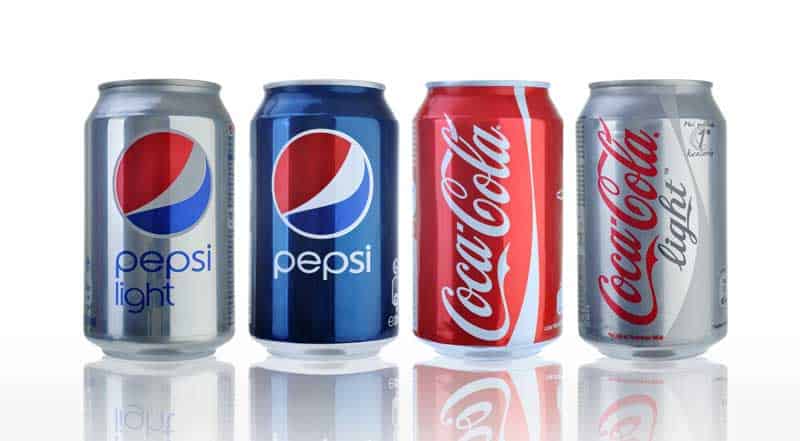
In addition there are a few things to ABSOLUTELY AVOID in your diet:
- Colas – because of their phosphorus content and coloring agents, both of which interfere with calcium absorption.
- Caffeine – because it increases the rate at which calcium is lost in the urine. Limit daily intake to the amount of caffeine in one or two cups of coffee.14
Now that we know what lifestyle changes could help with your bone density, are there nutrients you could be adding to your routine to encourage your bones to grow even stronger? The answer is yes!! And I’ve already laid them out for you in this blog, Nutrients That Build Better Bones.
References
1https://www.reuters.com/article/us-merck-fosamax-idUSKBN16T1JT
2https://emedicine.medscape.com/article/1447355-overview
3https://www.ncbi.nlm.nih.gov/books/NBK548566/
4https://www.ncbi.nlm.nih.gov/pmc/articles/PMC4428862/
5https://www.ccendoscopy.com/news/study-osteoporosis-meds-may-increase-esophageal-cancer-risk
6https://www.uspharmacist.com/article/bisphosphonate-nephrotoxicity-risks-and-use-in-ckd-patients
7https://www.ncbi.nlm.nih.gov/pmc/articles/PMC3780919/
8https://asbmr.onlinelibrary.wiley.com/doi/pdf/10.1002/jbmr.3879
9Tony Robbins, Life Force (New York: Simon & Schuster, 2022) p. 328-333
10Dr. David Brownstein. “Don’t Let Fragile Bones Ruin Your Life.” Natural Way To Health, Volume 8, Issue 11
(November 2015)
11Dr. David Brownstein. “Don’t Let Fragile Bones Ruin Your Life.” Natural Way To Health, Volume 8, Issue 11
(November 2015)
12Christiane Northrup, M.D., Women’s Bodies, Women’s Wisdom (New York: Bantam Books, 2010) 564
